MINIX NEO N42C-4 is the first Apollo Lake mini PC from the company, which also happens to be their first one with a fan, using internal antennas for WiFi and Bluetooth, and offering user-upgradeable storage and memory thanks to M.2 and SO-DIMM slots. The device also features three video output via HDMI 2.0, mini DiplayPort, and USB Type C ports supporting up to three independent display.
I’ve received a sample and already checked the hardware, and showed how to install an M.2 SSD and SO-DIMM RAM to the device in the first part of the review entitled MINIX NEO N42C-4 Triple Display Capable Mini PC Review – Part 1: Unboxing and Teardown, so I’ll report my experience with Windows 10 Pro in the second part of the review, and there should also be a third part specifically dealing with Linux support.
MINIX NEO N42C-4 Setup, System Info, BIOS
The device is basically an update to MINIX NEO Z83-4 Pro mini PC, also running Windows 10 Pro but on a Cherry Trail processor instead, and maybe of the part will be similar so I’ll refer to that review from time to time.
I first connected the mini PC with the usual peripherals and cables including USB keyboard & mouse, USB 3.0 hard drive, HDMI cable to my 4K TV, Ethernet cable, and since the computer also comes with a USB type C port supporting DisplayPort Alt mode, I also connected Dodocool DC30S USB-C hub in order to get a second HDMI display.
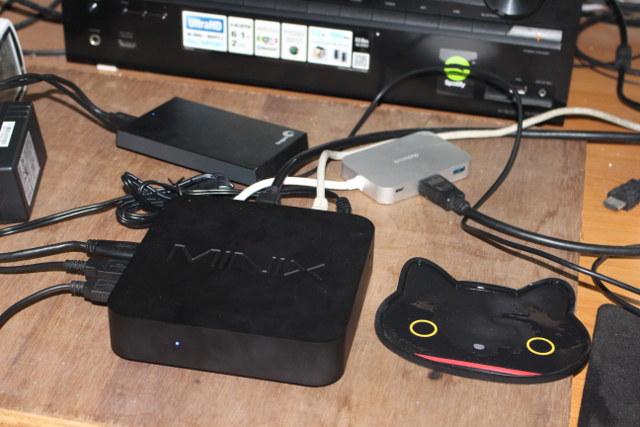
Time to connect the power supply, press the power button for two or three seconds to get started, with the blue LED on the front panel turning on, and shortly after getting to the Windows 10 Pro Welcome screen, where you could use Cortana voice assistant (or not) in order to go through the setup wizard to select the country and keyboard, accept the EULA, sign-in or create a user, set privacy settings and so on.
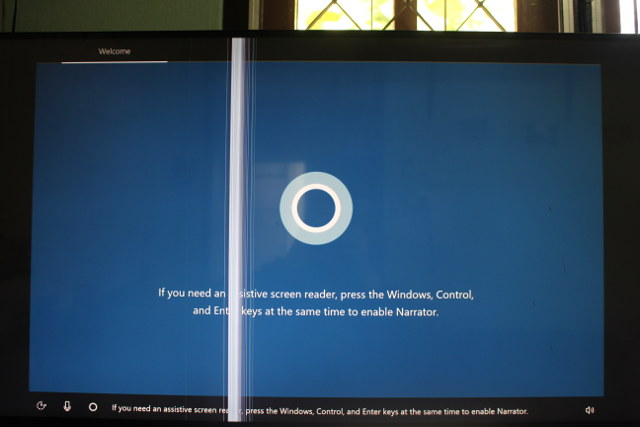 I won’t into details since the procedure is exactly the same as their previous moduel, and you can check the Windows 10 Pro setup wizard section of NEO Z83-4 Pro review to get more photos about the initial setup. What was different this time is that a large Windows update (2 to 3GB) was available, and I waited for it to complete before accessing Windows desktop, but as you can see from the photo below there’s also an option to “go to my desktop while my PC updates”.
I won’t into details since the procedure is exactly the same as their previous moduel, and you can check the Windows 10 Pro setup wizard section of NEO Z83-4 Pro review to get more photos about the initial setup. What was different this time is that a large Windows update (2 to 3GB) was available, and I waited for it to complete before accessing Windows desktop, but as you can see from the photo below there’s also an option to “go to my desktop while my PC updates”.
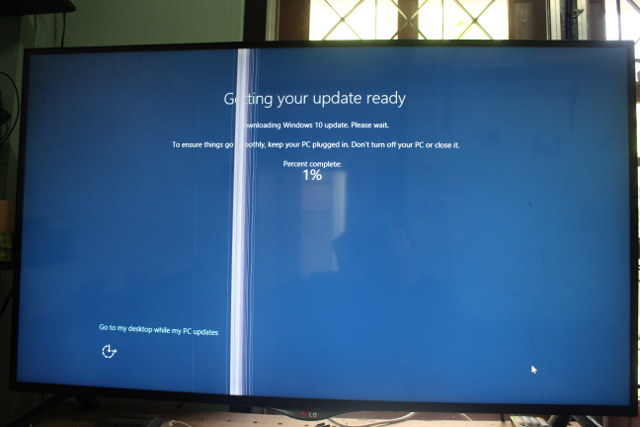 Now we can get to the desktop, and check info about the Windows 10 license, and basic hardware info in Control Panel-> System and Security -> System. The mini PC runs an activated version of Windows 10 Pro 64-bit, and is equipped with an Intel Pentium N4200 CPU, 4GB RAM as advertised.
Now we can get to the desktop, and check info about the Windows 10 license, and basic hardware info in Control Panel-> System and Security -> System. The mini PC runs an activated version of Windows 10 Pro 64-bit, and is equipped with an Intel Pentium N4200 CPU, 4GB RAM as advertised.
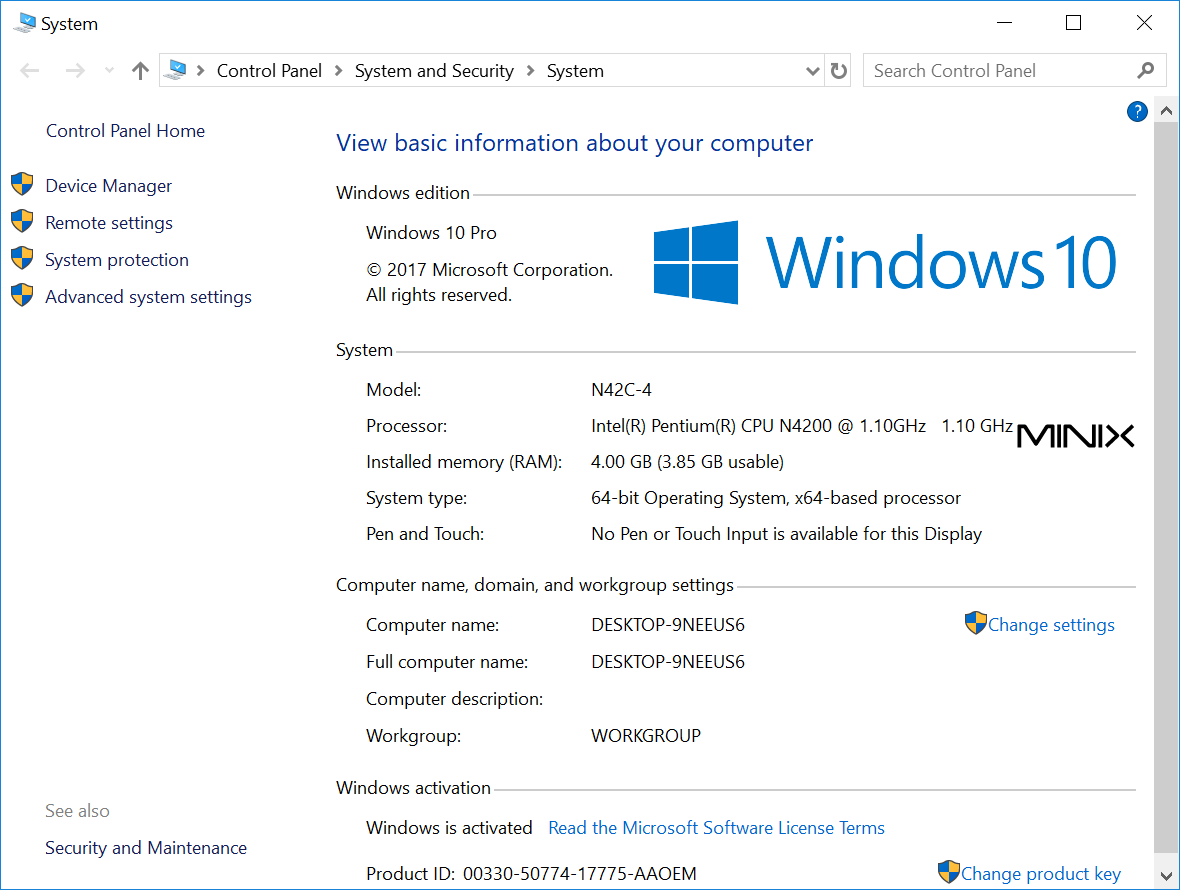
I took a screenshot of the “Devices and drives” section in “This PC” right after initial setup, and the 32GB eMMC flash has a 28.1 GB Windows partition (C: drive) with only 7.72GB free, but later on a pop-up will show up asking whether we want to delete the old Window 10 update files, and free space will increase a lot.
 The D: drive is the 240GB M.2 SSD I installed myself, but since I partitioned it for another review with EXT-4 and NTFS, only the 59.6GB NTFS shows up. E: and F: drives are the NTFS and EXFAT partition on the USB 3.0 drives, so all my storage devices and (Windows compatible) partitions have been detected and mounted properly.
The D: drive is the 240GB M.2 SSD I installed myself, but since I partitioned it for another review with EXT-4 and NTFS, only the 59.6GB NTFS shows up. E: and F: drives are the NTFS and EXFAT partition on the USB 3.0 drives, so all my storage devices and (Windows compatible) partitions have been detected and mounted properly.
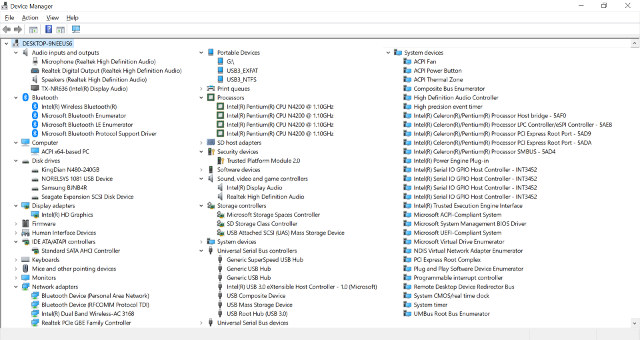
I tool a Device Manager screenshot for people wanting more technical details, and since we can see Trusted Platform Module 2.0 shown in security devices, I also launched tpm.msc “Trusted Platform Module Management” program to confirm the TPM was indeed ready for use.
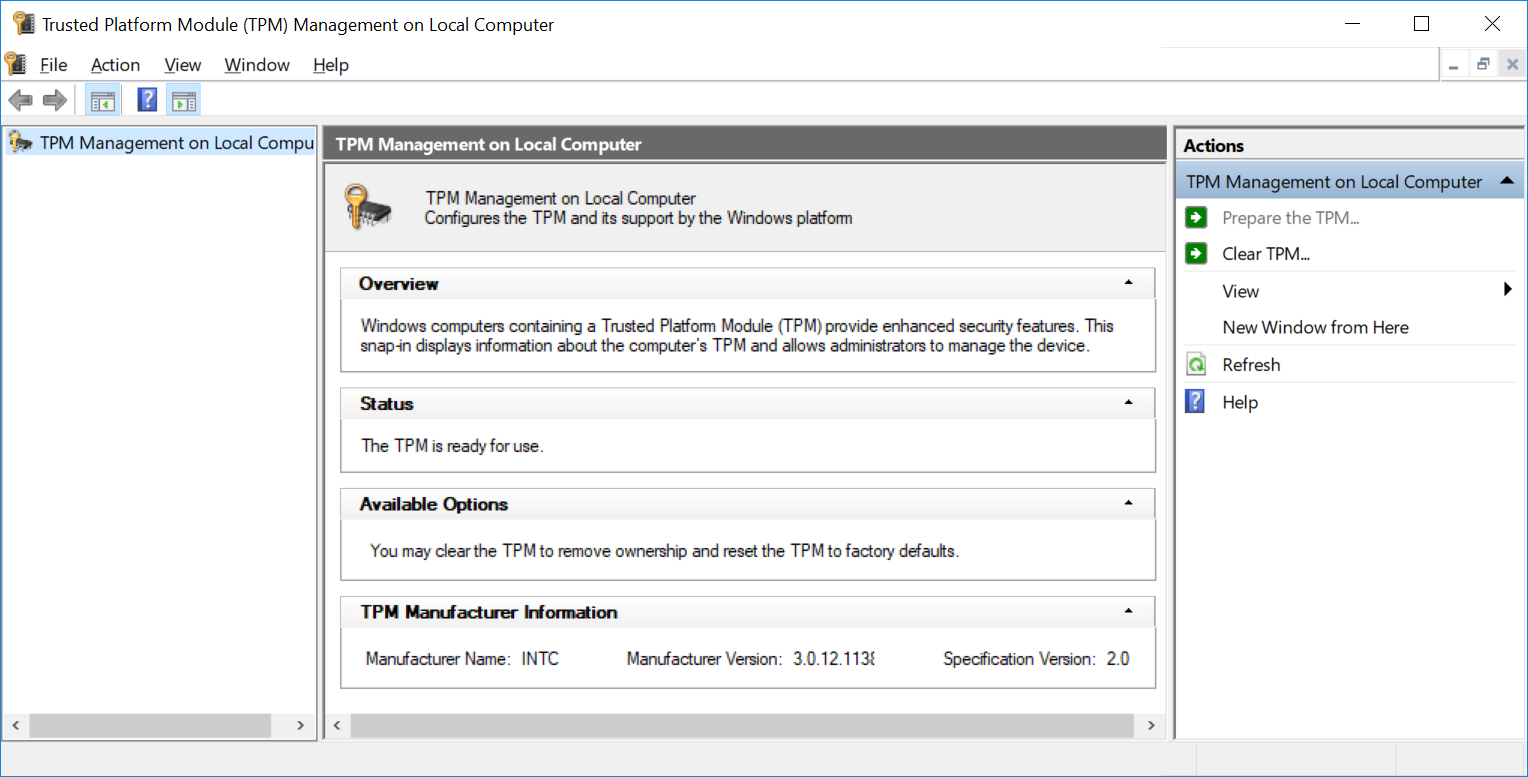
HWiNFO64 shows the same information as for other Intel Pentium N4200 systems, except for the CPU microcode (μCU) which has been updated to version 24, and hardware specific items like the motherboard name, and BIOS date and version.
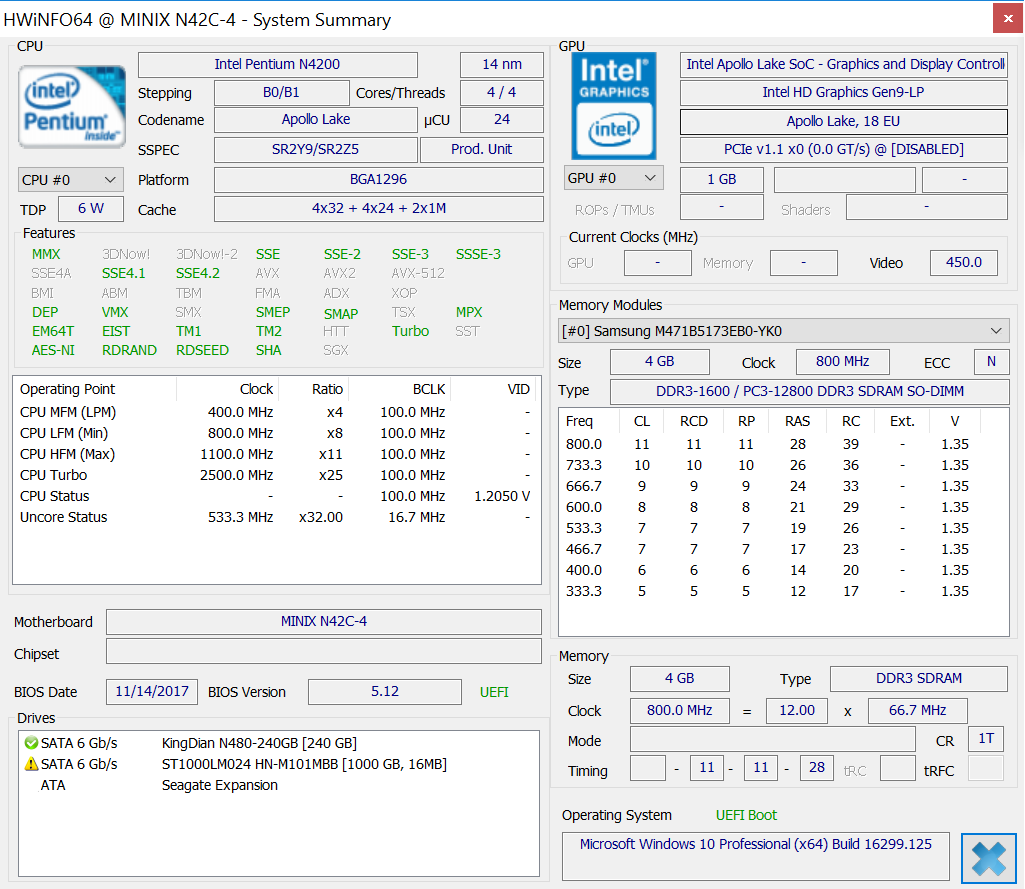
Since I don’t own any DisplayPort capable display, so I could not test triple display support, but I could still work with a dual setup display using the HDMI 2.0 port and USB type C port via my USB-C hub as shown in the photo below. You may want to read the video output ports limitation listed in the first part of the review to make sure the system meets your requirements if you plan to use three displays.
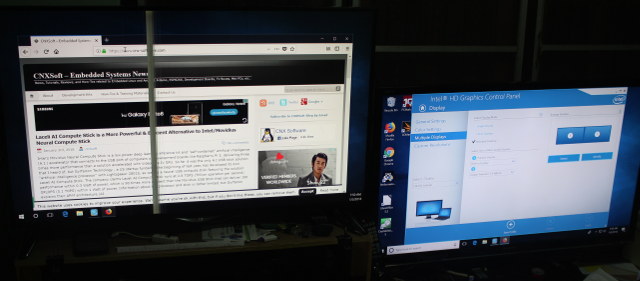
Pressing “Esc” at boot time will allow you to access Aptio Setup Utility, often referred to as “BIOS”.
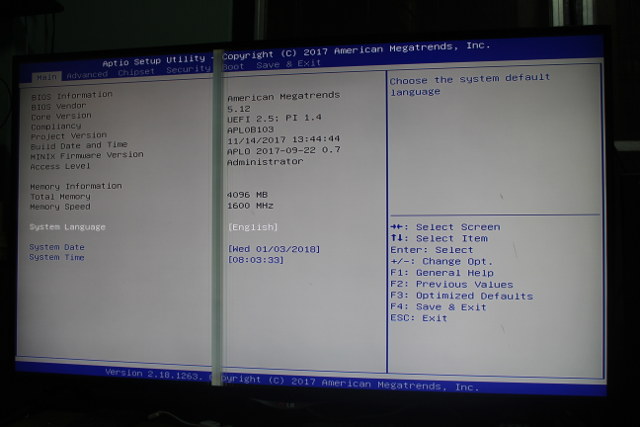
In previous models, MINIX had added several extra features in Advanced->MINIX Feature Configuration, but when I went there I could only find EarPhone Standard selection, no more restore AC power loss, wake-on-lan, etc…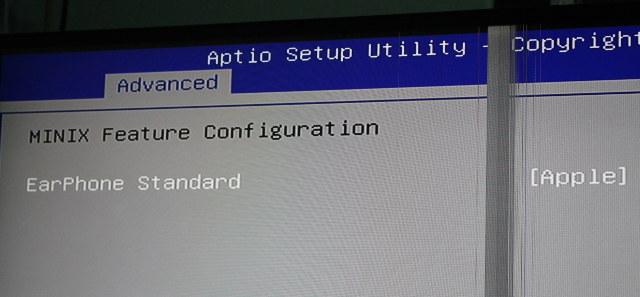 But then I found the other extra MINIX options had moved to Advanced->Power Management Configuration, and we still have WoL, resotre AC power loss, RTC wakeup, etc.. functions. So all is well…
But then I found the other extra MINIX options had moved to Advanced->Power Management Configuration, and we still have WoL, resotre AC power loss, RTC wakeup, etc.. functions. So all is well…
MINIX NEO N42C-4 Benchmarks
The performance of Intel Apollo Lake processor is now well know, but let’s still go through the usual benchmark to make sure everything is working as expected.

A PCMARK 10 score of 1,568 points is actually quite better than the score I obtained with MeLE PCG03 Apo (Celeron N3450 – 1,334 points), and MeLE PCG35 Apo (Pentium J3455 – 1,391 points), both quad core fanless Apollo Lake mini PCs, so it looks like the fan may be helping, as well as the faster storage as we’ll see below. For reference, NEO Z83-4 Pro’s PCMARK 10 score was 896 points, so there’s a clear performance benefit here.
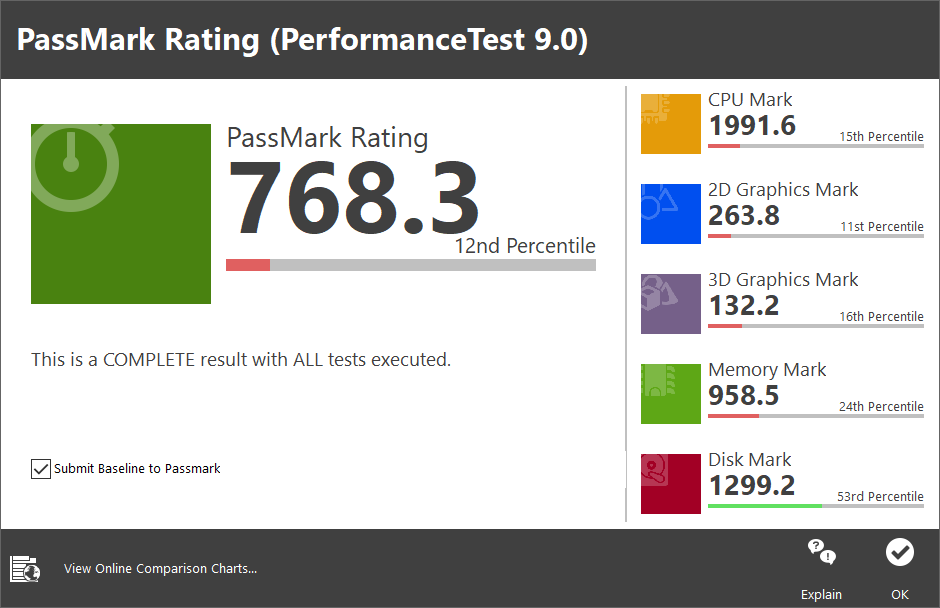
NEO N42C-4 passmark 9.0 score: 768.3 points. In this case, the mini PC is slower than MeLE PCG35 Apo with 790.7, which should be expected since Pentium J3455 (1.5/2.3 GHz, 10W TDP) is supposed to be a bit faster than Pentium N4200 (1.1/2.5 GHz, 6W TDP). However, if we compare to Voyo (V1) VMac Mini‘s score (1087.0 points) also based on Pentium N4200 processor, then it’s disappointing. But there’s an explanation, as PassMark attributes a significant share of the score to storage performance, and Windows 10 is install in the faster SSD in the Voyo mini PC, breaching Microsoft’s low cost license agreement in the process… However, there’s also another element of the score that is weak in N42C-4: 3D graphics mark (132.2 vs 325.8), and both systems were configured to use 1080p60.
I’ve run the 3D graphics mark manually again to make sure the issue was reproducible (it is), and get some data to compare to similar system with better score in the future.
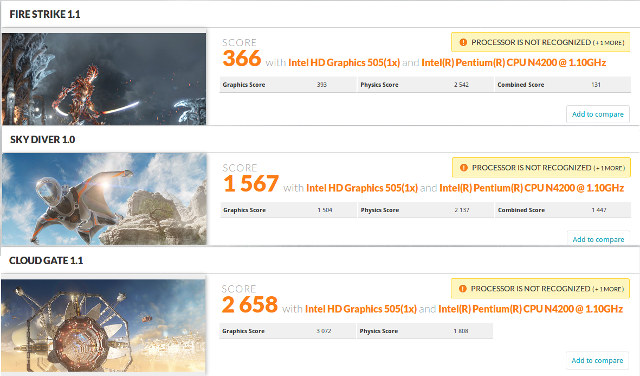
However, switching to 3DMark’s 3D graphics benchmarks, MINIX NEO N42C-4 performs better than Voyo V1 with respectively 366, 1,567, and 2,658 points for respectively Fire Strike 1.1, Sky diver 1.0, and Cloud gate 1.1, against 267, 1,384, and 2,347 points for the Voyo mini PC. Ice Storm benchmark failed to complete on NEO N42C-4 after three tries, even after a reboot, so there may be a problem with the 3D graphics drivers.
Links to results:
- Fire Strike 1.1 – https://www.3dmark.com/3dm/24354195
- Sky diver 1.0 – https://www.3dmark.com/3dm/24354343
- Cloud Gate 1.1 – https://www.3dmark.com/3dm/24354892
MINIX used a pretty good 32GB eMMC flash with sequential read up to 307.5 MB/s and writes around 81 MB/s, nearly twice as fast as their MINIX NEO Z83-3 Pro for reads, but random I/Os are roughly the same.
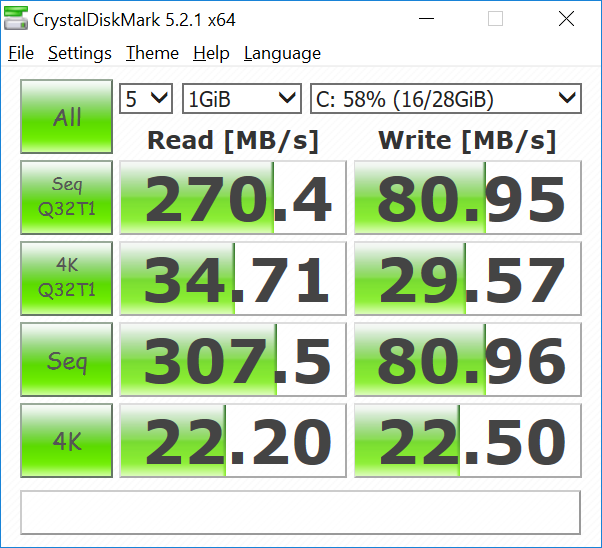 I also benchmarked KingDian N480 M.2 SSD, and results were even better than in MeLE PCG03 Apo mini PC with significantly better sequential and random speeds in most tests.
I also benchmarked KingDian N480 M.2 SSD, and results were even better than in MeLE PCG03 Apo mini PC with significantly better sequential and random speeds in most tests.
USB 3.0 NTFS write speed was rather poor (35 to 45MB/s) in MINIX NEO Z83-4 Pro mini PC, but NEO N42C-4 has no such problem getting over 100 MB/s for both read and write.
Full duplex Gigabit Ethernet performance is excellent:
|
1 2 3 4 5 6 7 8 9 10 11 12 13 14 |
iperf -t 60 -c 192.168.0.117 -d ------------------------------------------------------------ Server listening on TCP port 5001 TCP window size: 85.3 KByte (default) ------------------------------------------------------------ ------------------------------------------------------------ Client connecting to 192.168.0.117, TCP port 5001 TCP window size: 510 KByte (default) ------------------------------------------------------------ [ 5] local 192.168.0.104 port 40556 connected with 192.168.0.117 port 5001 [ 4] local 192.168.0.104 port 5001 connected with 192.168.0.117 port 50385 [ ID] Interval Transfer Bandwidth [ 5] 0.0-60.0 sec 6.10 GBytes 873 Mbits/sec [ 4] 0.0-60.0 sec 6.49 GBytes 928 Mbits/sec |
802.11ac WiFi performance is also very good, and much better than MINIX NEO Z83-4 Pro:
- Download
|
1 2 3 4 5 6 7 8 |
iperf -t 60 -c 192.168.0.114 ------------------------------------------------------------ Client connecting to 192.168.0.114, TCP port 5001 TCP window size: 85.0 KByte (default) ------------------------------------------------------------ [ 3] local 192.168.0.104 port 42090 connected with 192.168.0.114 port 5001 [ ID] Interval Transfer Bandwidth [ 3] 0.0-60.0 sec 1.85 GBytes 265 Mbits/sec |
- Upload
|
1 2 3 4 5 6 7 8 |
iperf -s ------------------------------------------------------------ Server listening on TCP port 5001 TCP window size: 85.3 KByte (default) ------------------------------------------------------------ [ 4] local 192.168.0.104 port 5001 connected with 192.168.0.114 port 50412 [ ID] Interval Transfer Bandwidth [ 4] 0.0-60.0 sec 1.73 GBytes 247 Mbits/sec |
So in my case, having switched to internal antennas do not negatively affect performance at all.
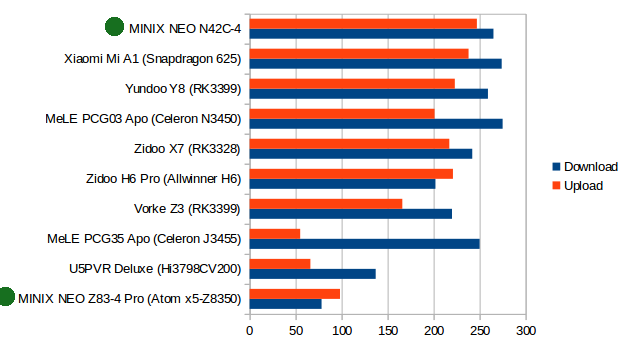 I’ve compared MINI NEO N42C-4 mini PC to other Apollo Lake mini PCs, as well as Cherry Trail based MINIX NEO Z83-4, and an Intel Core M3-6Y30 Compute Stick, whenever scores are available. First, there’s a clear advantage of upgrading from the Cherry Trail model to the Apollo Lake one, N42C-4 has the best eMMC storage performance (although systems run Windows 10 on an SSD will be faster), and usually performs better than other Apollo Lake mini PCs, except for Passmark 9.0 due to poor 3D graphics issues in that benchmarks.
I’ve compared MINI NEO N42C-4 mini PC to other Apollo Lake mini PCs, as well as Cherry Trail based MINIX NEO Z83-4, and an Intel Core M3-6Y30 Compute Stick, whenever scores are available. First, there’s a clear advantage of upgrading from the Cherry Trail model to the Apollo Lake one, N42C-4 has the best eMMC storage performance (although systems run Windows 10 on an SSD will be faster), and usually performs better than other Apollo Lake mini PCs, except for Passmark 9.0 due to poor 3D graphics issues in that benchmarks.
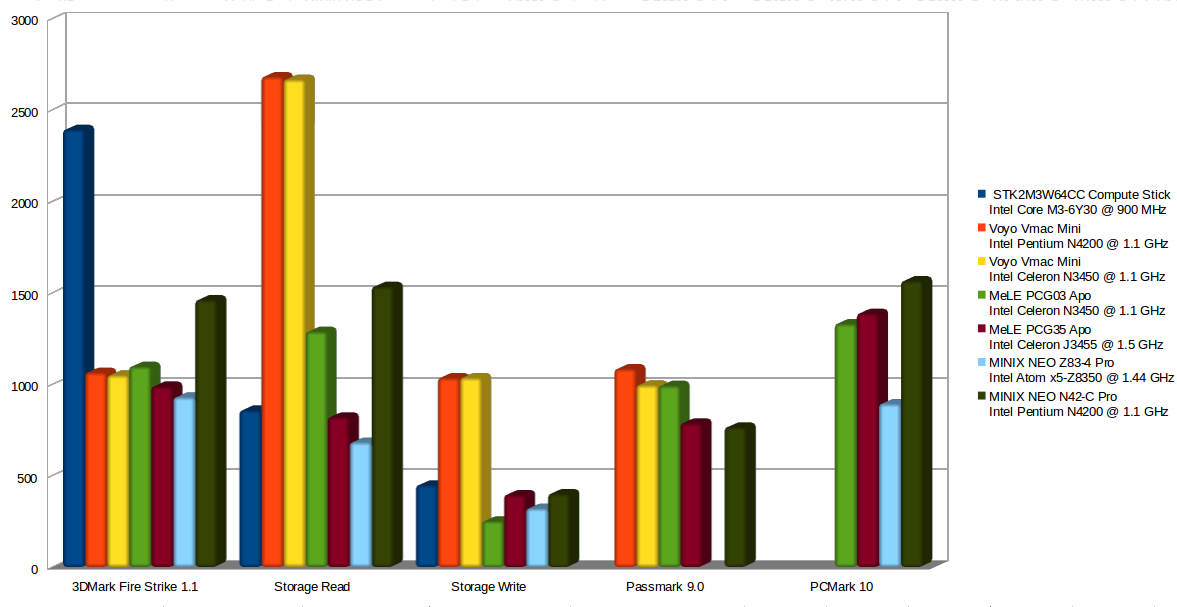
Note that the values above have been adjusted with different multipliers for each benchmarks (e.g. 3DMark Fire Strike multiplied by 5) in order to display all benchmarks in a single chart.
MINIX NEO Z83-4 Stress Testing, Power Consumption, and Fan Noise
I also use the device as a desktop computer, doing my usual tests such as multi-tasking with Thunderbird, LibreOffice, Firefox, etc, as well as multitab web browser, YouTube, playing Aaphast 8: Airborne game, etc… It works well with a user experience similar to most Apollo Lake mini PC, and the usual caveat like YouTube 4K working better in Microsoft Edge, but usual in Chrome/Firefox as long as you disable VP9. Whether Kodi 17.6 works suitably well with depending on your requirements. Automatic frame rate switching, HDMI audio pass-through for Dolby Digital 5.1, and 4K H.265 / H.264 are usually all working, but VP9 is using software decode and is quite slow, pass-through for TrueHD and DTS HD is not working, and from time to time some H.265 videos just show a black screen.
I stress-tested the mini PC using Aida64’s stability test for two hours, and CPU temperature never exceeded 60°C, so no thermal throttling problem at all, and it should make a good mini PC in relatively hot environments. CPU frequency averaged 1.8 GHz.
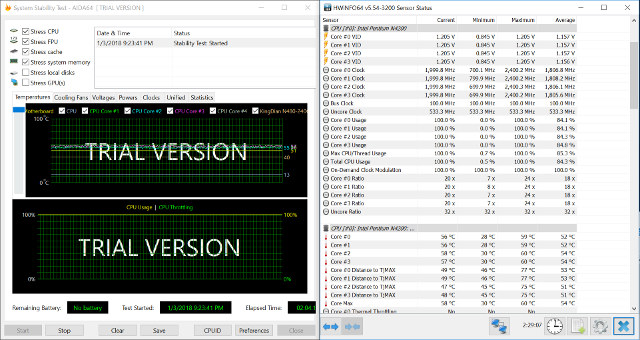
While there was not thermal throttling, the power limit was exceeded during spikes to burst frequencies, but I’d assume this may be normal behavior.
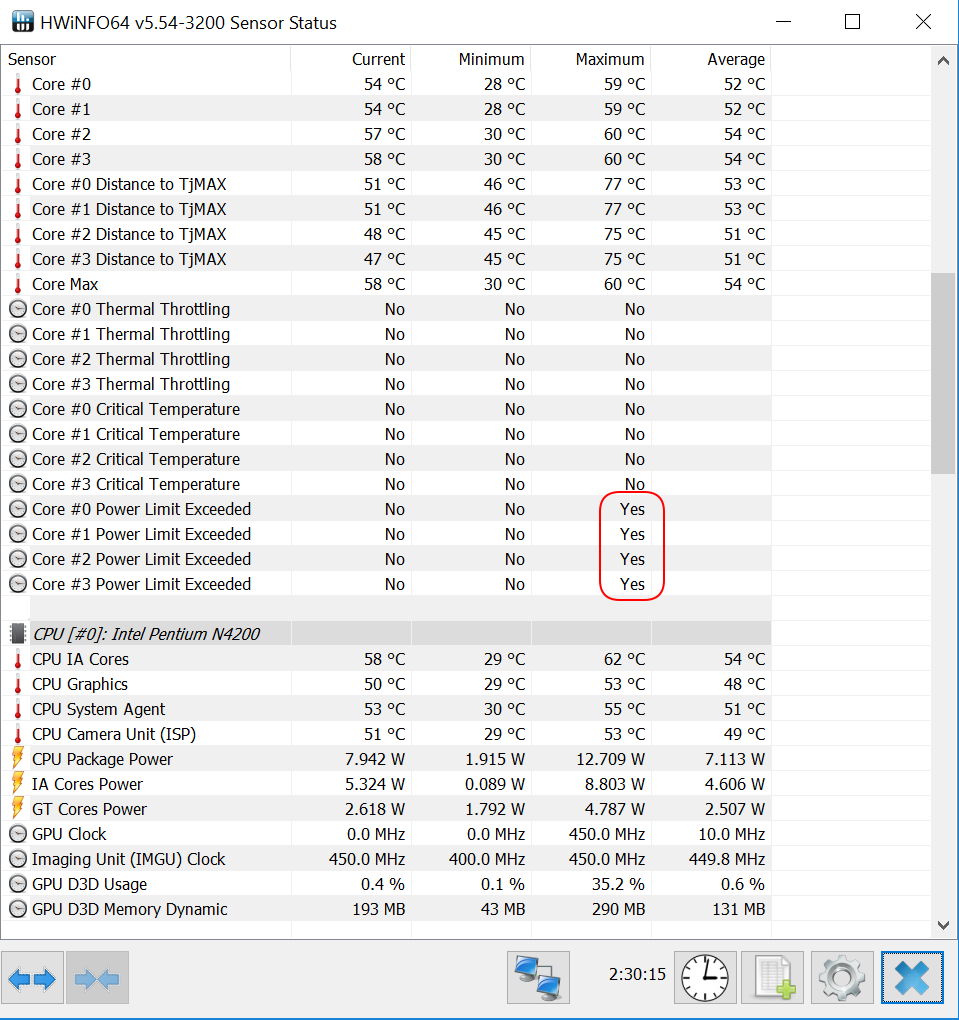
While the mini PC comes with a fan it is incredibly quiet, and if my main computer – which I admit is rather noisy – completely overwhelm whatever noise comes from NEO N42C-4. When I turn off all other equipment, I cannot hear anything while idle, unless I place my hear close to the device, in which case I hear some low level noise, either the fan turning slowing, or another source of noise. Under load, it’s possible to hear the fan, but again noise is very low.
I used GM1352 sound level meter, placing the device about 2cm above the enclosure (since I don’t happen to own an anechoic chamber), and as you can see from the table below measured sound levels are really low compared to a device like Voyo VMac Mini.
| Noise Level (dBA) | |
| Ambient voise (aka Silence) | 38.5 to 38.9 |
| MINIX NEO N42C-4 Idle | 39.1 to 39.5 |
| MINIX NEO N42C-4 Stress test | 39.7 to 40.4 |
| Voyo Vmac Mini – Idle | 52.3 |
| Voyo Vmac Mini – Stress test | 52.5 to 57.5 |
Finally some power consumption numbers without USB-C hub, nor USB 3.0 expansion drive unless otherwise noted:
- Power off –1.1 to 1.2 Watts
- Sleep – 1.2 Watts
- Idle – 6.4 Watts
- Aida64 stress test – 13.4 Watts
- Kodi 4K H.264 from HDD – 14.3 to 16 Watts
- Kodi 4K H.265 from HDD – 15 to 17.1 Watts
Conclusion
If you’ve been using MINIX NEO Z83-4 Pro mini PCs, MINIX NEO N42C-4 will offer a nice upgrade with significantly better performance, and all some problems I found in the Cherry Trail device are gone: USB 3.0 NTFS write speed is normal (100 MB/s), and 802.11ac WiFI performance is excellent, the best I’ve tested so far (with iperf). Compared to other Apollo Lake mini PCs, the performance is also a bit higher, running temperature is very low (< 60 °C) thanks to the quiet fan, and you’ve got a TPM 2.0 chip, VESA mount, support for triple display setup, an activated Windows 10 Pro OS, all features normally not found in other cheaper models. The low running temperature should make it ideal in hot climates where room temperature may be 35 to 40ºC.
The mini PC has some of the same limitations as other Apollo Lake mini PCs, with Kodi 17.6 handling VP9 codec with software decode, and no TrueHD, nor DTS-HD pass-through), and watching online videos for example with YouTube works better in Microsoft Edge. The only small issues I found are low 3D graphics performance in Passmark 9.0 – but no such performance issues in other benchmarks – and 3DMark Ice Storm benchmark would not complete successfully.
MINIX NEO N42C-4 Pro mini PC sells for $299.90 and up on various sites including Amazon US, Amazon UK, GearBest, GeekBuying, etc…

Jean-Luc started CNX Software in 2010 as a part-time endeavor, before quitting his job as a software engineering manager, and starting to write daily news, and reviews full time later in 2011.
Support CNX Software! Donate via cryptocurrencies, become a Patron on Patreon, or purchase goods on Amazon or Aliexpress


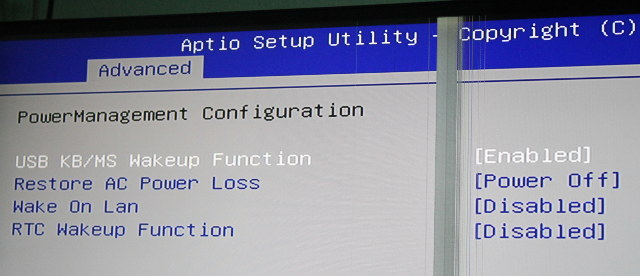

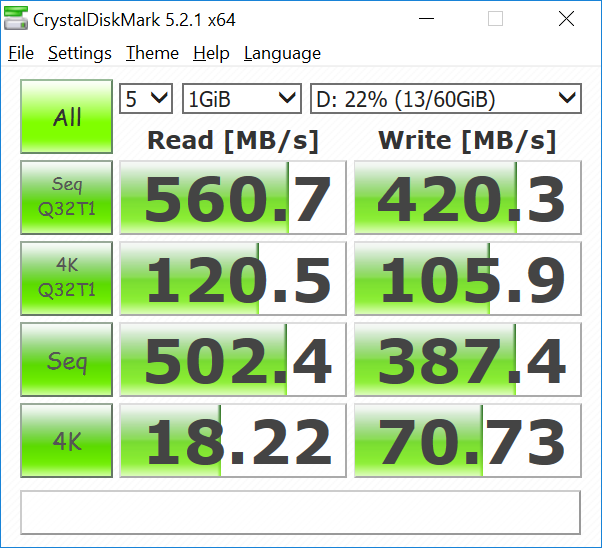
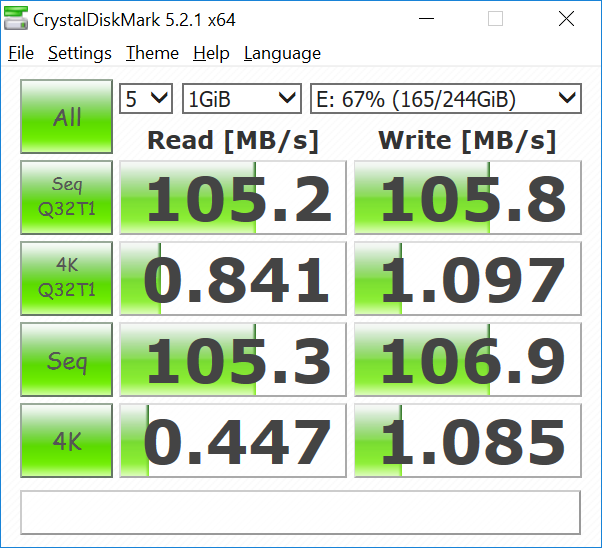



Unless you’re in a hurry, I’d wait for Gemini Lake based machines which should be superior in most ways to Apollo Lake.
@Paul M
You won’t have to wait long. Zotac just announced theirs.
https://liliputing.com/2018/01/zotac-introduces-2018-zbox-mini-pc-lineup-ahead-ces.html
Power off –1.1 to 1.2 Watts
Sleep – 1.2 Watts
So, if the consumption of 1.2W is given only by the power supply attached, it is better to keep the mini-box in Sleep mode, so you have an environment immediately ready for use.
@anyone
Yes, but no specs at all, no availability date, and no pricing info.
USB type C is always providing power by the way, and this should be expected since you can charge devices through this port, but in my case if I leave my USB type C hub connect with HDMI only, the power draw in power off mode is 3.4 to 4.0 watts. If I add an USB hard drive to the hub, power climbs to 6.2 Watts while powered off. Just something to keep in mind.
@cnxsoft
Can you provide the WiFi 2.4GHz throughput ?
Lots of people still depend on 11n for connecting to external equipment that has 2.4GHz only.
You provided 11n speeds during early last year, eg. Minix Neo U9H review 1/3/17, but recently not much. I list a few models from your WiFi Throughput graph comparing model throughputs on both 2.4 & 5GHz.
Model tested…………….MB/s..11n ……….11AC Review date
Mygica ATV1900AC (S812)……5.0………..7.4 27/8/15
Eweat R9 Plus (RTD1295)……..4.0……….7.2 24/12/16
MINIX NEO U9H (S912)………..1.5/2.1…..2.3/5.6 1/3/17
MINIX NEO U1 (S905)………….3.0……….6.0 14/12/15
Ugoos UT4 (RK3368)……………3.2……….5.8 19/1/16
@Paul
Yes, now I only test 802.11n in cheaper device, as 802.11ac is really a step up, and if you’re going to spend $300 on such such device, I’d recommend getting an 802.11ac router if you’re not using Ethernet.
Anyway here are the iperf values for 802.11n:
Download:
Upload:
Many thanks for your WiFi tests. Your NEO N42C-4 tests show a most remarkable x4.3 speed increase for 11ac over the fastest device (MyGica ATV1900AC) in the table above from your previous 11ac tests: 32 MB/s vs 7.4 MB/s for the ATV1900AC, ie. a x4.3 improvement.
I had hoped to just add your recent test to your MB/s speed tables published early last year. However cannot easily do that as you changed your method of testing. Your description of test method then: “In order to evaluate WiFi performance, I transfer a 278MB file between a network share (SAMBA) and the internal flash for three times using ES File Explorer, and average the results” (accounting for a presumed 1 Mbps = 0.125 MB/s) does not match your current method. Your recent switch to measure just iperf is arguably better in getting closer to pure WiFi capability in isolation, than your previous test method of more real world WiFi performance taking into account system overheads eg storage speed, which you pointed out severely limits WiFi speed for SBCs using slow memory.
Most curious the results in your previous table show at best a 2:1 speed increase of 11ac over 11n (perhaps due to sys overheads), whereas your NEO N42C-4 has a near 10:1 increase (32/3.45) of 11ac over 11n.
I agree 11ac is a step up in speed, but a step back in range, and as stated in earlier post, many people still depend on 11n for connecting to external equipment that has 2.4GHz only – irrespective of cost of their own equipment. I have an expensive 4 yr old Intel NUC with Intel Wireless 7260HMW with good 11n speed but a miserable range. What good is speed if no connection ?
I hope you can test 11n performance when you review next crop of Gemini Lake & other mini-PCs.
@Paul
I have troubles connecting to my Ubuntu 16.04 SAMBA shares from Windows 10, so I only do the “WiFI SAMBA” test in Android boxes normally.
As pointed out, you can’t compare the number directly between SAMBA and iperf. The former involves more parts in the system (storage, network, CPU), while the latter is more of a pure network test in most cases.
With SAMBA, storage is really a bottleneck with Gigabit Ethernet, with Fast Ethernet and WiFi not so much, unless you have really slow storage.